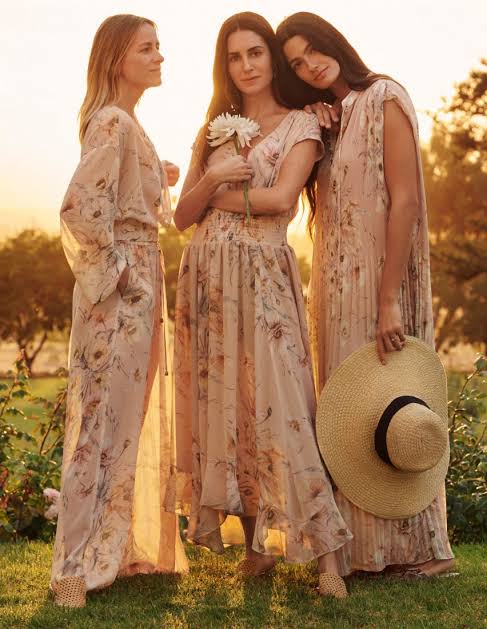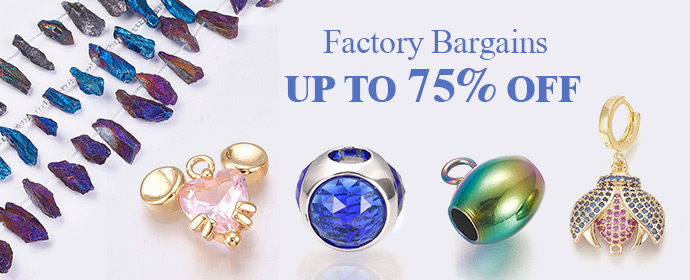In the era of rapid industrialization and mass consumption, the world of fashion has been facing increasing amounts of criticism for its impact on the environment. From the environmental wastage brought about by fast fashion to excessive water usage and harmful chemicals, the global fashion community has played a significant role in degrading the environment. But in recent years, consciousness about eco-friendly fashion as a new way to undo these ill effects has certainly increased by leaps and bounds. But how cautious are we being in adopting this change? It is indeed a big question that we must be cautious about. Are we moving quickly enough towards sustainability, or is it a fad? How far are we being eco-conscious and trying to make our planet environmentally secure for our future generations?
Keeping in view all the above-mentioned important questions, this article delves deep into the current state of sustainable fashion, the efforts that are leading it, the challenges faced, and how the industry and consumers can be the drivers in creating a greener future for generations to come.

Photo credit: CNN
Current State of Eco-Friendly Fashion
Sustainable fashion, or eco-friendly fashion, is the process of designing, producing, and consuming garments in a manner that is ecologically sound and sensitive to the social effects of the fashion world. It includes many practices such as the utilization of organic or recycled materials, ethical working conditions, and the elimination of waste as well as reducing carbon footprint.
1. Sustainable Materials: A Way Forward
Fashion has traditionally been based on man-made fibers like polyester, which come from fossil fuel-derived products and hence, cannot be biodegraded. Ecological Fashion, however, advocates the use of sustainable materials like organic cotton, hemp, bamboo, and recycled fibers. Apart from decreasing the demand for dangerous pesticides and fertilizers, these materials also lower the demand for natural resources like water and energy.
Organic Cotton: Grown without synthetic pesticides or fertilizers, organic cotton requires less water and is better for soil health.
Recycled Materials: Recycled nylon and polyester materials, often created with post-consumer plastic content, offer a chance to conserve landfill space and conserve resources.
Innovative Textiles: Technologies have also created new textiles from by-products like Bamboo, pineapple leaves (Piñatex), and mushroom leather (MuSkin), offering promising alternatives to conventional leather and synthetic fabrics.

Photo credit: Eco Friendly Change
2. Waste Reduction and Circular Fashion
One of the largest issues within fashion is the volume of waste created. The Ellen MacArthur Foundation reports that the worldwide fashion industry contributes 92 million tons of waste per year. Circular fashion works to cut this waste by designing for longevity, reuse, and recyclability.
Upcycling: Rather than disposing of worn-out clothes, upcycling means converting old clothes into new, useful products.
Repair and Reuse: Promoting the repair and reuse of clothing lengthens its lifespan and contributes to lowering consumption.
Clothing rentals: Some services, like Rent the Runway, enable consumers to rent instead of purchasing in the first place.

Photo credit: World Overviewers
3. Ethical Manufacturing
Sustainability is also applied in fashion to how clothing is manufactured. Fast fashion is criticized on the grounds of using cheap labor from developing nations in hazardous working environments. Sustainable fashion aims to introduce fair trade practices, safe working environments, and decent wages for laborers.
Fair Trade Certifications: Brands that are ethically conscious in production usually opt for fair trade certifications to ensure that their laborers are treated fairly.
Local Production: Fashion brands can cut down on transport emissions and achieve a closer association with the labor force by producing goods locally.

Photo credit: HAMK
4. Carbon Footprint and Energy Consumption
The fashion world’s carbon footprint is a big problem, with most conventional production processes dependent on fossil fuels and generating high emissions. To address this, sustainable brands are using clean energy resources in production steps and focusing on low-impact production practices.
Solar and Wind Power: Retail brands like Patagonia have made investments in clean energy technologies to drive their plants and limit their carbon footprint.
Sustainable Dyeing Methods: Conventional dyeing methods use huge quantities of water and generate poisonous waste. New methods, like waterless dyeing, are being created to minimize the environmental footprint of this process.

Photo credit: Vogue
Challenges in Achieving Sustainable Fashion
Though increasing pressure for Eco-Friendly Fashion is building, a number of barriers stand in its way:
1. Price of Sustainable Materials: Sustainable materials and fabrics tend to be more expensive than traditional alternatives. This can make it challenging for niche brands or upcoming designers to compete with fast fashion behemoths.
2. Consumer Behavior: The Fast Fashion market feeds on the instant-gratification culture and affordable, fashionable clothing. Getting consumers to spend money on high-quality, long-lasting clothing and to purchase fewer items in general is a change of heart that is often hard to come by.
3. Scale of Change: The shift towards a more sustainable fashion business is a gigantic effort, with transformations through the entire supply chain, from raw material sourcing through to distribution. Scale will involve collaborative efforts from brands, manufacturers, policymakers, and consumers.
4. Transparency Deficit: The fashion sector has a long history of being opaque about supply chain activities. In the absence of clear and verifiable sustainability criteria, it is difficult for consumers to make well-informed decisions regarding the environmental and social footprint of their purchases.

Photo credit: Ethos
The Significant Role of Consumers
Though the fashion sector plays an important role in making fashion more sustainable, consumers also play a crucial role. Consumers can create demand for sustainable products and influence brands through more sustainable consumer choices.
1. Educating Themselves: Consumers can educate themselves regarding the materials, manufacturing processes, and ethical practices of brands in order to make better-informed choices.
2. Quality Over Quantity: Spending money on high-quality, classic pieces that will last longer than continuously purchasing low-cost, trendy pieces can lower overall consumption.
3. Encouraging Eco-Friendly Brands: Consumers can generate market incentives for companies to become more responsible by encouraging brands that are dedicated to sustainability.

Photo credit: Fabrica Kraft
The Future of Eco-Friendly Fashion
As consciousness increases and technology improves, the future of sustainable fashion is bright. Advances in biodegradable materials, green energy, and circular design principles will continue to influence the development of the industry. Additionally, governments and regulatory agencies are beginning to implement tougher environmental regulations on the fashion industry, further fueling the transition toward sustainability. But actual change will need to be a collaborative effort from everyone involved: manufacturers, designers, consumers, and policymakers. The difficulty is not only in minimizing the environmental footprint of fashion but also in transforming consumer habits and attitudes in a manner that supports long-term sustainability.

Photo credit: LinkedIn
Frequently Asked Questions (FAQs) on Eco-Friendly Fashion
1. What are Eco-Friendly Fabrics?
Eco-Friendly Fabrics are materials that are made in a manner that has less impact on the environment. These include organic fibers such as cotton, hemp, and bamboo, and recycled materials such as polyester made from post-consumer plastic bottles.
2. Why is fast fashion unhealthy for the environment?
Fast fashion drives a cycle of overproduction and overconsumption, which generates too much waste, large amounts of carbon emissions, and overuse of natural resources. Fast turnover of garments also fosters disposable consumption, which ends up in landfill waste.
3. How do I make my wardrobe more sustainable?
To build a more sustainable wardrobe, think about buying second-hand, choosing high-quality, long-lasting clothing, repairing and upcycling old clothes, and investing in brands that value ethical and sustainable manufacturing practices.
4. What are some examples of sustainable fashion brands?
Some popular sustainable fashion brands are Patagonia, Stella McCartney, Reformation, and Everlane. They specialize in sustainable materials, ethical working conditions, and minimizing their carbon footprint.
5. Is sustainable fashion costly?
Although sustainable fashion tends to be costlier at first with the added expense of environmentally friendly material and fair labor, it is generally more affordable in the long term. Sustainable clothing is more durable and has a longer lifespan, so less will be needed over time.
6. Is fashion ever completely sustainable?
Although it might prove difficult for fashion to become fully sustainable because of the intricacies of production and consumption, tremendous strides are being taken towards a more sustainable fashion industry. With the implementation of circular fashion, ethical production, and sustainable resources, fashion can become significantly greener.

Photo credit: Faslet
Conclusion: Eco-Friendly Fashion is the Need of the Hour for Sustainable Futures
Sustainable Fashion is not merely a trend but signifies an essential transition within the industry toward sustainability, ethics, and the environment. Though obstacles persist, increased demand for sustainable fashion, as well as innovations in material development and manufacturing methods, depict an encouraging outlook for the future. With consumers and industry participants increasingly choosing eco-friendly options, the world of fashion can opt to have a sustainable future.

Photo credit: Freepik
Author: Raja Bahar Khan Soomro
You can also read the following suggested articles just by clicking on them
1. How Middle Eastern Fashion Is Blending Tradition with Modernity In 2025
2. Does Luxury Really Meet Sustainability? How European Fashion Designers Are Rethinking Fashion
3. Fast Fashion Versus Slow Fashion: Understanding the Impact and Global Consumer Shifts
5. Diversity on the Runways: How Global Fashion Weeks Are Celebrating Inclusivity
Recommended1 recommendationPublished in apparel, Bathing Suits, Bridal, celebrity fashion, Health, Makeup, Our Fashion Passion, Petite, Plus Size, Pop Fashion, Shoes, Skin Care, street style, Uncategorized









